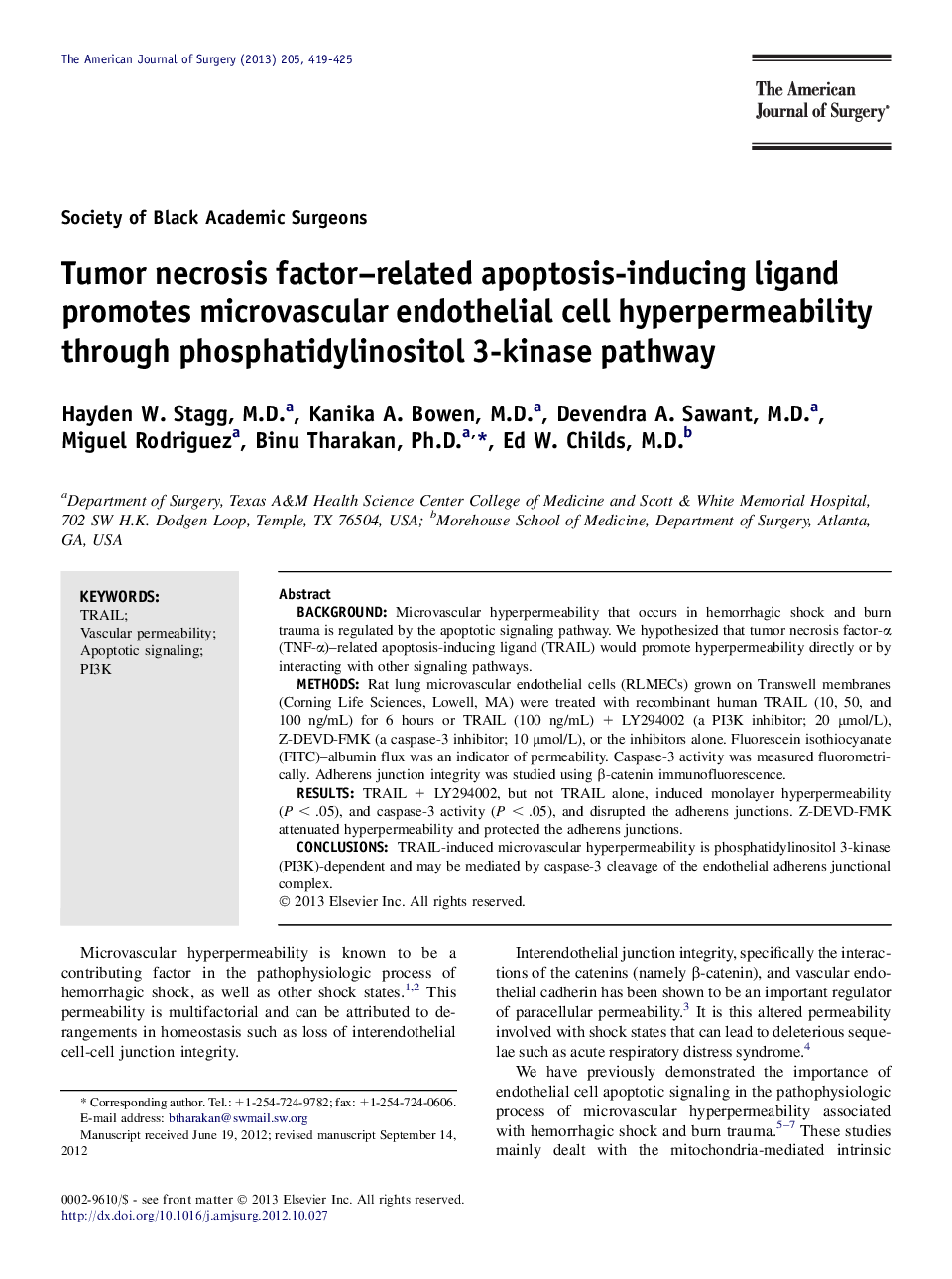| کد مقاله | کد نشریه | سال انتشار | مقاله انگلیسی | نسخه تمام متن |
|---|---|---|---|---|
| 4278994 | 1611520 | 2013 | 7 صفحه PDF | دانلود رایگان |

BackgroundMicrovascular hyperpermeability that occurs in hemorrhagic shock and burn trauma is regulated by the apoptotic signaling pathway. We hypothesized that tumor necrosis factor-α (TNF-α)–related apoptosis-inducing ligand (TRAIL) would promote hyperpermeability directly or by interacting with other signaling pathways.MethodsRat lung microvascular endothelial cells (RLMECs) grown on Transwell membranes (Corning Life Sciences, Lowell, MA) were treated with recombinant human TRAIL (10, 50, and 100 ng/mL) for 6 hours or TRAIL (100 ng/mL) + LY294002 (a PI3K inhibitor; 20 μmol/L), Z-DEVD-FMK (a caspase-3 inhibitor; 10 μmol/L), or the inhibitors alone. Fluorescein isothiocyanate (FITC)–albumin flux was an indicator of permeability. Caspase-3 activity was measured fluorometrically. Adherens junction integrity was studied using β-catenin immunofluorescence.ResultsTRAIL + LY294002, but not TRAIL alone, induced monolayer hyperpermeability (P < .05), and caspase-3 activity (P < .05), and disrupted the adherens junctions. Z-DEVD-FMK attenuated hyperpermeability and protected the adherens junctions.ConclusionsTRAIL-induced microvascular hyperpermeability is phosphatidylinositol 3-kinase (PI3K)-dependent and may be mediated by caspase-3 cleavage of the endothelial adherens junctional complex.
Journal: The American Journal of Surgery - Volume 205, Issue 4, April 2013, Pages 419–425